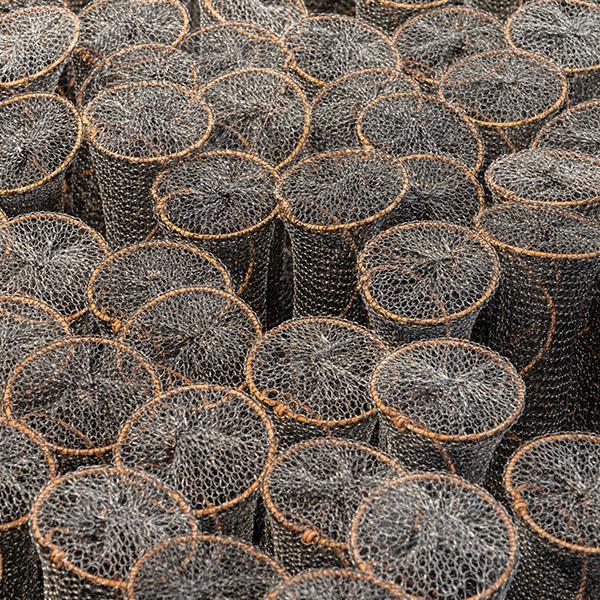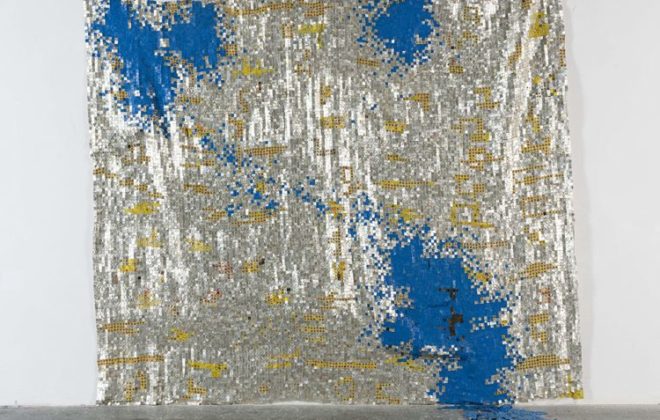Textiles in the Venice Biennale: part 1
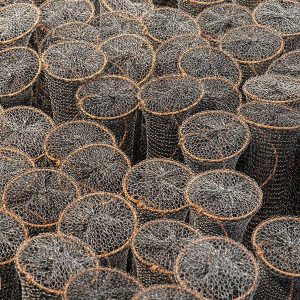
Detail of Gõegõe
In October 2022, I was thrilled to be able to visit the Venice Biennale for the first time. I spent only a short time there with a friend, so we had to pack three days full of gallery visits, taking only short breaks. It was a wonderful but almost overwhelming experience.
Sometimes called the Olympics of art, this was the 59th iteration of the huge event, with 213 artists from 58 countries. Cecelia Alemani curated this enormous exhibition in venues across Venice, which emphasised the work of women and minorities and included what is sometimes called applied art, ie textiles, ceramics, glass, etc. I want to highlight the textile works of art that stood out for me.
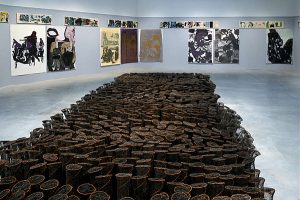
Gõegõe
A South African artist, Bronwyn Katz, created a six-meter-long floor piece called Gõegõe, made from found bed springs. Echoing Tracey Emin’s famous work, she refers to the fact that bed is where much of life and death happens. Gõegõe is a mythical sea serpent, and for Katz it is a metaphor for humans’ exploitative relationships. This effective work uses its simple elements to repeat but not in a rigid way, creating a rhythm.

Another aspect of the Biennale was the inclusion of neglected female artists of the past. One of them is Ruth Asawa, an American of Japanese heritage who died in 2013, who made what she called ‘transparent sculptures’. The hanging works are made of open knitted wire in organic shapes, giving a sense of immateriality and lightness seldom seen in sculpture. She was ahead of her time, with the more well-known Isamu Noguchi trying similar things with paper a few years later.
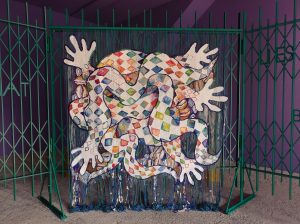
Some artists didn’t make their own work, subcontracting it out to skilled artisans or assistants. Alberta Whittle, whose themes are racial injustice and colonialism and who trained at Edinburgh College of Art and represented Scotland at the biennale, enlisted the help of the Dovecot Studios to weave the tapestry which is one part of her installation, Entanglement is more than blood. It references Scotland’s ‘slavery amnesia’, also known as ‘It wisnae us’.
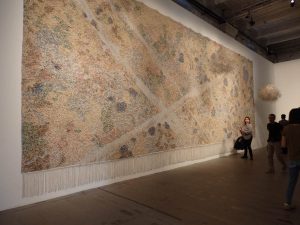
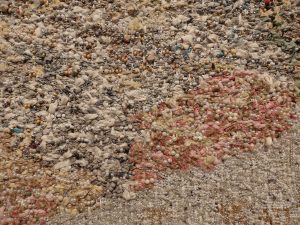
detail of Bonteheuwel/Epping
Igshaan Adams created a tapestry over eleven meters wide called Bonteheuwel/Epping, referring to the South African landscape with makeshift paths or ‘desire lines’, non-standard routes used by the inhabitants of the township where he lived to get to their places of work. The work is enhanced with items often considered almost worthless – shells, string, beads – but which create a lively surface texture.
What was appealing about these pieces? Often it was the scale, works that towered and showed the commitment of the artist; elements that repeat but not exactly; and the use of improbable materials, ones which might be discarded, but in the right hands become beautiful. To be continued.


